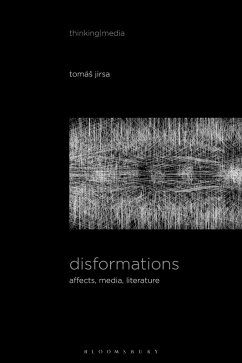What happens when forms fall apart? And how do affects such as fear, shock, fascination, and desire drive and shape formal disturbances in modern literature, cinema, and contemporary art? Opening an interdisciplinary dialogue between cultural affect theory, media philosophy, and literary studies, TomáS Jirsa explores how specific affective operations disrupt form only to generate new formations. To demonstrate the importance of the structural work of mutually interacting affects, Disformations provides close readings of four intermedia figures stretched out across modernist fictions, contemporary video art, and posthuman visual experiments-the faceless face, the wallpaper pattern, the garbage dump, and the empty chair. Analyzing a wide range of texts, images, and audiovisual works, from Vincent van Gogh and Charlotte Perkins Gilman to Rainer Maria Rilke, Gaston Leroux, and Richard Weiner, to Francis Bacon, Michel Tournier, Ingmar Bergman, Eugène Ionesco, Vladimir Nabokov, Joseph Kosuth, and Jan serých, this book opens up a new avenue for addressing how aesthetic forms desubjectify affects to mobilize their mediality and performative qualities. Jirsa's innovative theoretical framework and incisive readings offer a fresh inquiry into how artistic media produce their own figural thinking and in so doing compel us to think with them anew.

